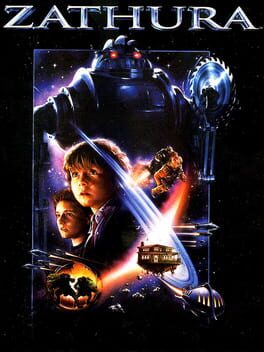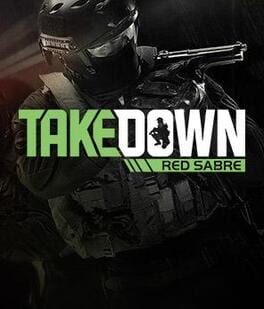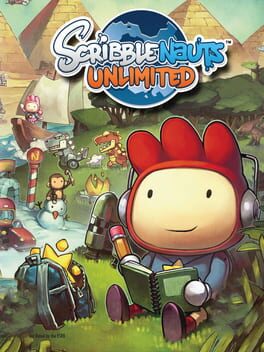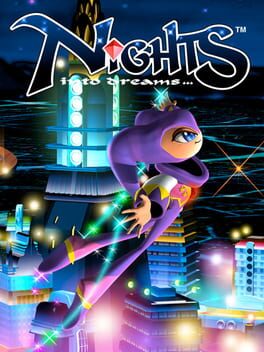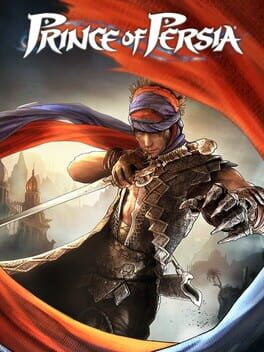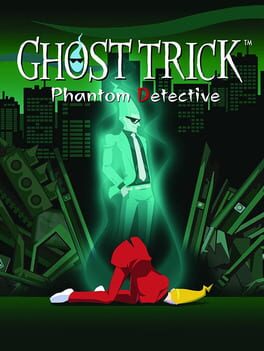FluorideChugger
172 Reviews liked by FluorideChugger
Zathura
2005
Takedown: Red Sabre
2013
This game is a special kind of awful for me due to it being the first game I immediately uninstalled after finishing its campaign (or rather something that barely resembles a campaign). I recently played it again to reevaluate and see if I was too harsh on it initially, and I ended up just hating it more.
I was looking forward to Takedown: Red Sabre at the time due to it being showcased as a tactical shooter in the vein of SWAT and Rainbow Six, which are a series of games I enjoyed playing, which also belongs to a sub-genre of shooters that were increasingly becoming more niche during the period of release of this game.
Even the latest Rainbow Six games during that period were Vegas 1 & 2, a more Gears of War-Esque action shooter with less emphasis on planning, and more on cover-based shooting. I had a lot of fun with these games too but they weren't exactly tactical shooters in the same way their predecessors were.
Takedown: Red Sabre is also one of the earliest examples of a crowdfunded game that was successfully funded on Kickstarter. It raised over $200k, and its promised release date was only late by three months. Which in hindsight, was probably better off being delayed further, if not indefinitely. I didn't back the project myself but I can only imagine how even more disappointed its backers were.
Onto the game itself, it starts promising enough, albeit barebones. You have an option to choose your loadout, which includes weapons, equipment, and armor type. Nothing complex but serviceable enough to give an impression of having a variety of approaches for each mission.
You can then choose between Mission, Tango Hunt, and Bomb Disarm. Tango Hunt is a straightforward mode where you eliminate all hostiles in any chosen map, whereas Bomb Disarm has you get to specific points in the map and disarm all bombs.
Mission Mode is the campaign mode of the game, where you can go through two different training missions and five different main missions each with differing objectives.
All in all, a decent enough variety even if somewhat lacking in quantity. The first red flag however is after choosing any of the modes and then realizing you don't have many options for your AI squad other than to turn them on or off individually. There are labels for squads Alpha, Bravo, and Charlie, on which you'd be forgiven to think it implies three different squads. What it actually does however is that it's the option of individual characters that would be available in the mission.
That's right, Alpha, Bravo, and Charlie are individuals, which means they're simply options if you want to play completely solo or have one or two accompanying squad members.
This isn't all too bad still, if somewhat disappointing since there's still a lot of potential for tactical approaches with a group of three.
Then you get to the actual gameplay. Right off the bat, there are no options to command your squad members, they only follow you and barely have any form of AI. I could forgive the lack of a planning phase, but just having straight up no options for your squad severely limits your options further, and pretty much eliminates the notion of this being a tactical shooter.
I proceeded further in this game with an open mind, thinking perhaps the solo experience would still be an intense shooter where the gunplay, mechanics, and map layouts would provide enough of a worthwhile experience.
None of those were present. The movement feels incredibly stiff and slow. If I were to describe it further, it feels like something is stuck between the buttons of your keyboard or controller and each press feels like there's a half a second delay before it actually registers. The speed of movement as well is absurdly slow, that if you were to encounter the player characters in reality, you'd be able to get away from them by walking at a regular pace and then turning towards a 45-degree angle.
This horrible movement then creates a domino effect on everything else terrible about the game. Enemies are placed on random spots in the map, with basic patrol waypoints or static in a single position. Random elements are fine in creating an interesting and replayable experience but with the nature of the game's quality, it only serves further to create a frustrating experience.
Enemies have laser-focused accuracy, and it only takes a few shots, sometimes even a single one to kill you. This is regardless of your chosen armor type as well, on which the differences between heavy and light or minuscule both in the amount of protection they provide or the difference in movement speed.
The game provides players the ability to lean, which somehow manages to be hardly useful as even having a centimeter of your character exposed is enough for an enemy to get a shot on you.
You're pretty much at the mercy of luck and being able to catch an enemy first within your sights before they do. You then also realize the true purpose of having two other members of your squad, intentionally or not, where they actually function as a sort of 'lives system' since when you get killed, you take control of the next member.
But even treating it like that, it fails to properly function as a lives system because there's a few second delay before you actually switch to the next squad member. This creates frustrating scenarios where the enemy that killed you will also kill the next squad member because they lack the AI to do anything else than to follow your position a few inches away from you.
All of this is pretty much enough to sap out any potential enjoyment out of the game. The gunplay is serviceable enough, if somewhat weightless. Visually it also looks fine, albeit really bland. Which in honesty, just makes the game worse in context because there's nothing noteworthy in any other department.
Even infamously bad games like Ride to Hell or Rogue Warrior gave me more entertainment due to being unintentionally funny. Takedown: Red Sabre lacks any sort of character or charm, and it plays awful enough to be considered bad, but not bad enough to produce unintentional hilarity. It's a sterile bad game where everything just falls into place of being dreadfully boring and completely frustrating.
If there's one positive I can get out of playing Takedown: Red Sabre, is that it made me appreciate other games more, and it provides a benchmark on how a game can end up being serviceable enough in some elements but completely bad in others, where it actually ends up feeling worse than games that are just completely bad and broken.
I was looking forward to Takedown: Red Sabre at the time due to it being showcased as a tactical shooter in the vein of SWAT and Rainbow Six, which are a series of games I enjoyed playing, which also belongs to a sub-genre of shooters that were increasingly becoming more niche during the period of release of this game.
Even the latest Rainbow Six games during that period were Vegas 1 & 2, a more Gears of War-Esque action shooter with less emphasis on planning, and more on cover-based shooting. I had a lot of fun with these games too but they weren't exactly tactical shooters in the same way their predecessors were.
Takedown: Red Sabre is also one of the earliest examples of a crowdfunded game that was successfully funded on Kickstarter. It raised over $200k, and its promised release date was only late by three months. Which in hindsight, was probably better off being delayed further, if not indefinitely. I didn't back the project myself but I can only imagine how even more disappointed its backers were.
Onto the game itself, it starts promising enough, albeit barebones. You have an option to choose your loadout, which includes weapons, equipment, and armor type. Nothing complex but serviceable enough to give an impression of having a variety of approaches for each mission.
You can then choose between Mission, Tango Hunt, and Bomb Disarm. Tango Hunt is a straightforward mode where you eliminate all hostiles in any chosen map, whereas Bomb Disarm has you get to specific points in the map and disarm all bombs.
Mission Mode is the campaign mode of the game, where you can go through two different training missions and five different main missions each with differing objectives.
All in all, a decent enough variety even if somewhat lacking in quantity. The first red flag however is after choosing any of the modes and then realizing you don't have many options for your AI squad other than to turn them on or off individually. There are labels for squads Alpha, Bravo, and Charlie, on which you'd be forgiven to think it implies three different squads. What it actually does however is that it's the option of individual characters that would be available in the mission.
That's right, Alpha, Bravo, and Charlie are individuals, which means they're simply options if you want to play completely solo or have one or two accompanying squad members.
This isn't all too bad still, if somewhat disappointing since there's still a lot of potential for tactical approaches with a group of three.
Then you get to the actual gameplay. Right off the bat, there are no options to command your squad members, they only follow you and barely have any form of AI. I could forgive the lack of a planning phase, but just having straight up no options for your squad severely limits your options further, and pretty much eliminates the notion of this being a tactical shooter.
I proceeded further in this game with an open mind, thinking perhaps the solo experience would still be an intense shooter where the gunplay, mechanics, and map layouts would provide enough of a worthwhile experience.
None of those were present. The movement feels incredibly stiff and slow. If I were to describe it further, it feels like something is stuck between the buttons of your keyboard or controller and each press feels like there's a half a second delay before it actually registers. The speed of movement as well is absurdly slow, that if you were to encounter the player characters in reality, you'd be able to get away from them by walking at a regular pace and then turning towards a 45-degree angle.
This horrible movement then creates a domino effect on everything else terrible about the game. Enemies are placed on random spots in the map, with basic patrol waypoints or static in a single position. Random elements are fine in creating an interesting and replayable experience but with the nature of the game's quality, it only serves further to create a frustrating experience.
Enemies have laser-focused accuracy, and it only takes a few shots, sometimes even a single one to kill you. This is regardless of your chosen armor type as well, on which the differences between heavy and light or minuscule both in the amount of protection they provide or the difference in movement speed.
The game provides players the ability to lean, which somehow manages to be hardly useful as even having a centimeter of your character exposed is enough for an enemy to get a shot on you.
You're pretty much at the mercy of luck and being able to catch an enemy first within your sights before they do. You then also realize the true purpose of having two other members of your squad, intentionally or not, where they actually function as a sort of 'lives system' since when you get killed, you take control of the next member.
But even treating it like that, it fails to properly function as a lives system because there's a few second delay before you actually switch to the next squad member. This creates frustrating scenarios where the enemy that killed you will also kill the next squad member because they lack the AI to do anything else than to follow your position a few inches away from you.
All of this is pretty much enough to sap out any potential enjoyment out of the game. The gunplay is serviceable enough, if somewhat weightless. Visually it also looks fine, albeit really bland. Which in honesty, just makes the game worse in context because there's nothing noteworthy in any other department.
Even infamously bad games like Ride to Hell or Rogue Warrior gave me more entertainment due to being unintentionally funny. Takedown: Red Sabre lacks any sort of character or charm, and it plays awful enough to be considered bad, but not bad enough to produce unintentional hilarity. It's a sterile bad game where everything just falls into place of being dreadfully boring and completely frustrating.
If there's one positive I can get out of playing Takedown: Red Sabre, is that it made me appreciate other games more, and it provides a benchmark on how a game can end up being serviceable enough in some elements but completely bad in others, where it actually ends up feeling worse than games that are just completely bad and broken.
A wonderfully unique game, NiGHTS Into Dreams is not only an impressive game from 1996 but also a game that remains one of a kind to this day.
Accompanying its distinctive gameplay mechanics, the game has a fantastic soundtrack and great visual design that truly captures its dreamworld premise.
The game has a simple control scheme that allows itself to ease the player into its aerial movement and level design. Despite the simple controls, the goal can be somewhat unclear at first, but it becomes more prominent quickly, especially after subsequent playthroughs.
Going from a simple clear to attaining higher ranks becomes the mantra over the course of the game. Each level also only takes a few minutes to finish, encouraging replays constantly.
The game separates level sets through a selection of two characters, Claris and Elliot. The former being the easier set and the latter being the harder one. You can start with any of the sets but it's generally encouraged to ease yourself with Claris first.
The levels are also well varied, not only in their environments and visuals but also in the layout and flow. You'll be traversing through sections each with its own unique design, ranging from different layers to another dimension of movement.
At the end of each level, there are boss fights as well with their own distinct gimmicks on how to defeat them. Facing them the first time makes them feel almost like a puzzle, and it feels very rewarding in figuring them out. Even better as you realize there are methods to defeat them all quickly, further boosting the potential for higher scores.
While there aren't a lot of levels, the amount of care and thought put into each does make up for it. Though it would have been nice if the final level was different for Claris and Elliot, or even just a slight variation from each other.
The story is also simple and charming, which works well for the dreamworld premise and showcases an easy to understand lighthearted plot requiring no dialogue to weave into the game's premise.
Overall NiGHTS Into Dreams is an enjoyable game that is remarkable both within and out of its genre. It's worth playing through even for just experiencing its unique premise all the way through. And to those who are willing to master its mechanics, it's a delight to come back to and improve on through subsequent playthroughs.
Accompanying its distinctive gameplay mechanics, the game has a fantastic soundtrack and great visual design that truly captures its dreamworld premise.
The game has a simple control scheme that allows itself to ease the player into its aerial movement and level design. Despite the simple controls, the goal can be somewhat unclear at first, but it becomes more prominent quickly, especially after subsequent playthroughs.
Going from a simple clear to attaining higher ranks becomes the mantra over the course of the game. Each level also only takes a few minutes to finish, encouraging replays constantly.
The game separates level sets through a selection of two characters, Claris and Elliot. The former being the easier set and the latter being the harder one. You can start with any of the sets but it's generally encouraged to ease yourself with Claris first.
The levels are also well varied, not only in their environments and visuals but also in the layout and flow. You'll be traversing through sections each with its own unique design, ranging from different layers to another dimension of movement.
At the end of each level, there are boss fights as well with their own distinct gimmicks on how to defeat them. Facing them the first time makes them feel almost like a puzzle, and it feels very rewarding in figuring them out. Even better as you realize there are methods to defeat them all quickly, further boosting the potential for higher scores.
While there aren't a lot of levels, the amount of care and thought put into each does make up for it. Though it would have been nice if the final level was different for Claris and Elliot, or even just a slight variation from each other.
The story is also simple and charming, which works well for the dreamworld premise and showcases an easy to understand lighthearted plot requiring no dialogue to weave into the game's premise.
Overall NiGHTS Into Dreams is an enjoyable game that is remarkable both within and out of its genre. It's worth playing through even for just experiencing its unique premise all the way through. And to those who are willing to master its mechanics, it's a delight to come back to and improve on through subsequent playthroughs.
Prince of Persia
2008
The annoyingly titled Prince of Persia comes out in a very awkward situation. Ubisoft released Assassin's Creed a year prior, which was a major hit, but they couldn't yet afford to depend on that IP since it was still fairly unproven, and considering that videogame series never end until people get sick of them, despite POP ending pretty well in Two Thrones, they had to come up with a new game in the series. Perfect timing too since 2008 was around the time where videogame reboots became really popular, so it was a no-brainer to do what Sands of Time did for the series before. Sadly this game just made me wish I was playing Sands of Time instead.
In an attempt to reinvent the series pretty much everything is different here, even where there's no reason to change: from "minor" things like the control layout being completely different despite this Prince having around the same moves that the previous one had, to major ones like how the game is structured and how the platforming works.
The structure here is kinda similar to Warrior Within, but with more of a point: instead of having a linear game in an interconnected world, now you have the choice of what you want to tackle next. Here's the problem: because you can reach most parts of the game any time you want, they all had to be fairly similar in difficulty and content. Meaning that it all blends in after a while, making this game a very repetitive experience, especially when you realize that every level has pretty much the same pacing and structure.
But even if they didn't go that route, and even if they didn't make you grab a bunch of collectibles arbitrarily for padding purposes, the whole game has been completely reworked seemingly to play itself as much as possible. Everything now has massive scripting around it, every jump, every action basically just requires you to press the correct button somewhere around the time the animation is about to play in. When I figured this out I mostly stopped even using the analogue stick, mashing whichever button is required to make the Prince go forward usually suffices. It turns the trademark great platforming of the series into what is essentially boring busywork.
It's a shame that the great art direction was wasted on a game so bland and unassuming. It's kinda baffling to see a series degrade so much in just a couple years, but it's what we ended up with. In their attempt to make something new and exciting, they ironically did the exact opposite, creating a game which somehow feels both really small and less than the sum of its parts, despite the work that obviously went into it.
In an attempt to reinvent the series pretty much everything is different here, even where there's no reason to change: from "minor" things like the control layout being completely different despite this Prince having around the same moves that the previous one had, to major ones like how the game is structured and how the platforming works.
The structure here is kinda similar to Warrior Within, but with more of a point: instead of having a linear game in an interconnected world, now you have the choice of what you want to tackle next. Here's the problem: because you can reach most parts of the game any time you want, they all had to be fairly similar in difficulty and content. Meaning that it all blends in after a while, making this game a very repetitive experience, especially when you realize that every level has pretty much the same pacing and structure.
But even if they didn't go that route, and even if they didn't make you grab a bunch of collectibles arbitrarily for padding purposes, the whole game has been completely reworked seemingly to play itself as much as possible. Everything now has massive scripting around it, every jump, every action basically just requires you to press the correct button somewhere around the time the animation is about to play in. When I figured this out I mostly stopped even using the analogue stick, mashing whichever button is required to make the Prince go forward usually suffices. It turns the trademark great platforming of the series into what is essentially boring busywork.
It's a shame that the great art direction was wasted on a game so bland and unassuming. It's kinda baffling to see a series degrade so much in just a couple years, but it's what we ended up with. In their attempt to make something new and exciting, they ironically did the exact opposite, creating a game which somehow feels both really small and less than the sum of its parts, despite the work that obviously went into it.
